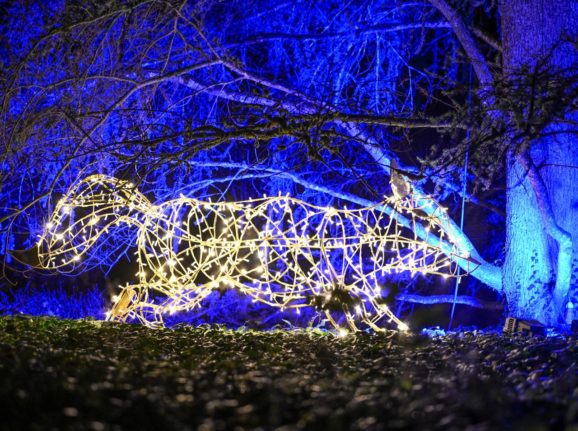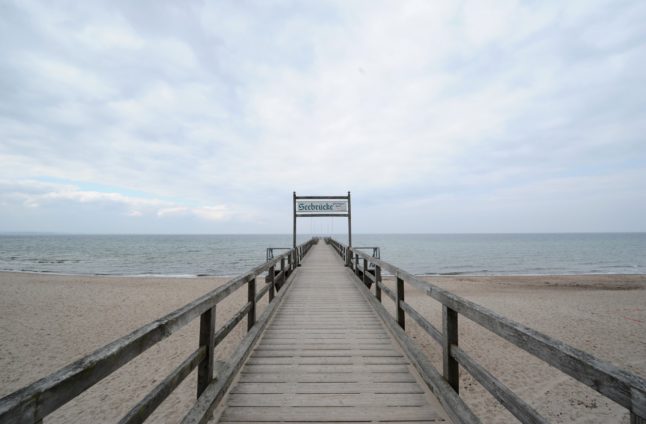It’s cold, it’s wet and the joy of Christmas is behind us, so it be can tempting to stay home and hibernate in January. But before you draw the curtains and wrap yourself up in a big blanket, check out a few of these events happening around Germany this January.
Who knows? They may even tempt you out of the house…
January 1st – 15th: Christmas Gardens
If you’re not quite ready for Christmas to be over, why not gather family and friends and head to one of the magical Christmas Gardens around the country? From Berlin to Stuttgart and Dresden to Cologne, parks and botanical garden across the country are lit up with dazzling lights and imaginative installations.
To get the best experience, head there after dark and enjoy a hot chocolate or cup of Glühwein as you soak up the sights of the winter wonderland. You can find details of all the Christmas Gardens around the country and how to buy tickets here.

January 5th – 21st: Tanztage 2023, Berlin
This cult festival of contemporary dance is returning to Berlin for the 32nd time, showcasing the best up and coming talent on the dance scene. This year, the performances will explore our sensory overwhelm in the modern world and consider how we can adapt to the rhythm of today’s high-speed, social media-driven reality.
Each of the ten performances will be accompanied by seminars or workshops that will build on the themes explored in the work. Visit the Tanztage website for more information and to book tickets.
January 6th: Epiphany
After the 12 days of Christmas comes the feast of Epiphany or Dreikönigsfest – the Festival of the Three Kings. On this date, three lucky German states – Bavaria, Baden-Württemberg, and Saxony-Anhalt – also have a bank holiday.
If you’re in a Catholic state, you may see ‘Star Singers’ go door to door collecting money for charity, and traditionally the Chancellor also gets a visit from these tuneful youngsters, who are usually dressed up as the three kings.
Even if you’re not in one of the regions where you get to put your feet up on the 6th, there are often plenty of evening concerts happening on this date, so keep an eye out for something in your area.
READ ALSO: Three Kings’ Day: What you should know about Germany’s public holiday in three states
January 16th – February 1st: Pop Freaks Festival, Stuttgart
After a two-year Covid hiatus, Pop Freaks festival is returning to the Merlin cultural centre in Stuttgart for six days of groundbreaking music from the German-speaking world. More than just a pop event, Pop Freaks Festival showcases bands and artists from across the spectrum of genres, with a mixture of music-industry veterans and up-and-coming acts. This year, the line-up includes Kratzen, Tristan Brusch and Wildes, among others. You can find more details and a full line-up here.
READ ALSO: Five ways to make the most of Germany this winter
January 20th – 23rd: Nachtiville Festival, Wangels, Schleswig-Holstein
If you’ve been missing summer beach parties this winter, make sure you head to Nachtiville, an electronic music festival held on Weissenhäuser Strand on the Baltic coast. As you might imagine, shivering on a beach all night wouldn’t be too fun in January, so you’ll be relieved to know the festival is primarily indoors.
This year around 4,000 electronic music fans are expected to turn up, and Ben UFO, DJ Stingray, und Helena Hauff are confirmed in the line-up.

January 23rd – 29th: Film Festival Max Ophüls Preis, Saarbrücken
Berlinale may not be on until February, but film buffs can still get their fix at the Film Festival Max Ophüls Preis (MOP) in Saarbrücken. Over six days, a total of 127 films will be presented in 225 screenings in the seven festival cinemas in Saarbrücken and other parts of Saarland. Of these, more than 50 will be competing for top prizes in the categories of feature film, documentary, medium-length film, and short film.
You can find more information on the festival and the competitors for this year here on the MOP website.
READ ALSO: Surviving winter: 8 tips for enjoying the cold like a true German
January 27th – February 5th: CTM Festival, Berlin
If you’re itching to go to a January event that couldn’t be more Berlin if it tried, the CTM Festival could be exactly what you’re looking for. This contemporary art and music festival is focusing on the theme of “Portals” this year and will explore how music and sound can be a gateway to alternative realities. Organisers say there’ll be a strong focus on South Asian electronic music this year, as well as collaborations between African and German artists via the Afropollination project. The festival is also teaming up with KW Institute of Contemporary Art on a multimedia performance that will bridge the worlds of music and visual art.
For more information and to book tickets, visit the CMT Festival website.
January 29th – February 5th: Montgolfiade Hot-Air Balloon Festival, Tegernsee, Bavaria
It’s hard to imagine a more picturesque setting for a balloon festival than Tegernsee, a sprawling lake in Bavaria surrounded by Alpine views. This year, visitors can once again pack a picnic hamper, wrap up warm, and admire an endless array of colourful balloons as they soar over Lake Tegernsee. And for those who prefer higher altitudes, 2023 marks the first year where people will be able to book balloon rides themselves and enjoy the view from above.
Depending on the weather conditions, balloons will be taking off daily from 9am from various launch sites in the Tegernsee Valley. You can find more information and book your balloon ride here.



 Please whitelist us to continue reading.
Please whitelist us to continue reading.
Member comments